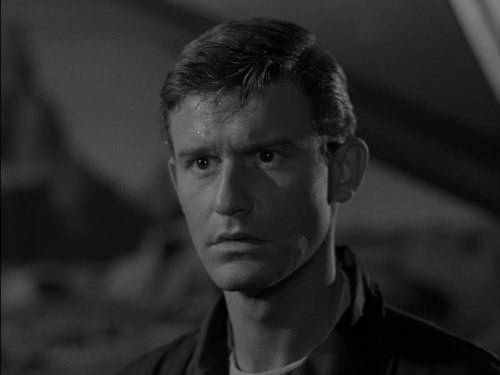Meet a Twilight Zone protagonist:
Odds are, they’re an ordinary person. Maybe not exactly like you, but they’re normal, with hopes and dreams and aspirations. They’re living life relatively normally, until everything goes wrong.
Or, they’re a total scumbucket, a rogue who goes through life without regard for others. Everything is going great, until the world gets turned on its head, and they have to deal with an unexpected hand of comeuppance.
Either way, someone’s day is getting ruined.
The protagonist character types of The Twilight Zone tend to go in one of two directions: innocents who are being unjustly tormented, or the unjust being fairly punished. Depending on what kind of story it is, you can kind of see it coming.

The trouble with writing for an anthology series is that there’s never a ‘cast’ to come back to. There’s no starship crew, no band of adventurers, not even one detective to return as the main draw to the show. When it came to writing the characters for The Twilight Zone, they had to be different characters every time. While they couldn’t go back to one singular character, what the writers could do was go back to a character template, or type, for their episodes. Typically, that’s what they did.
The question is, why? Why did these writers fall back so often on these two styles of characters?
That’s the question we’re going to be talking about today. Let’s take a look. (Spoilers below!)
Frankly, this isn’t a terribly hard question to answer. The fact is, when you only have 25 to 50 minutes to introduce an interesting character to torment, you’ve only got a handful of options that will work. Especially when you’ve got a show like The Twilight Zone, where the enjoyment is in the new twists and scenarios, not necessarily the characters.
These two types of characters: the good and the bad, serve as ways for the audience to relate to the events unfolding before them. Is it a ‘good’ character? You’re probably meant to feel sympathy for all of the horrible things that are happening. Is it a ‘bad’ character? You’re probably supposed to get the satisfaction of justice by the end as the character gets what he deserves.

The type of character chosen for a particular episode of The Twilight Zone aren’t random. It’s not a roulette to figure out whether or not you’re supposed to feel sympathy about today’s events. In fact, the choice for the character type has a lot to do with each individual story.
Let me explain what I mean.
Each story of The Twilight Zone had a point to make. Sometimes the lesson was obvious, sometimes less so, but it was always there. Typically the lesson would only work with one of the two characters.
For a story to start out with a sympathetic, ‘good guy’ character, the story is typically going to be crueler, but there’s also a higher chance for a happy ending. Exceptions like Time Enough At Last, Where Is Everybody?, The Midnight Sun or To Serve Man are meant to hit even harder, for the unhappy twist to be that much more shocking. You feel for these characters, and the ending feels that much more unjust, unfair, and makes you think more about it, about how you’d feel in these situations. These characters are audience surrogates, and their reactions to the endings mirror our own.
This is especially clear in the cases of some of these ‘good guy’ protagonist’s seemingly ‘bad’ endings not really being so awful after all. The Hitch-Hiker’s twist of the protagonist being dead this whole time isn’t treated as a tragedy. Neither is the twist of The Hunt, or Nothing in the Dark. (Ironically, all three revolve around death.) In these cases, the protagonists move on to meet their fates with dignity, again, making the audience think about how they perceive the endings. And sometimes, there’s no ‘bad ending’ at all, in cases like Walking Distance, The Night of the Meek, or A Game of Pool.

On the other hand, you have the unsympathetic protagonists.
These are the characters from The Little People, The Masks, and A Nice Place to Visit. These are the ‘bad guys’. They are unlikeable, unsympathetic. They deserve what they get. They earn their ‘unhappy’ twist, and the lesson is not in a twist, it is in who it happened to. It is not an exact mirror held to humanity, it is a prediction of what the worst of us could be. These characters exist to remind us that we, the viewer, surely aren’t that bad, but we might be. It is a funhouse mirror, a warning of what we could become if we aren’t careful.
Rather sobering, isn’t it?
The point of the characters of The Twilight Zone is to drive the point home, to emphasize the severity of the events. They don’t exist as fully developed people because they are windows for the audience to see what’s going on, to experience through them the awfulness of the episode’s situation. They are audience surrogates, blank sheets upon which to project ourselves so we can experience the show.
And with that in mind, it really, really works, in an eerie, odd, Twilight Zone kind of way.
Thank you guys so much for reading! Don’t forget that our ask box is always open for discussion, conversation, questions, or suggestions. I hope to see you in the next article.